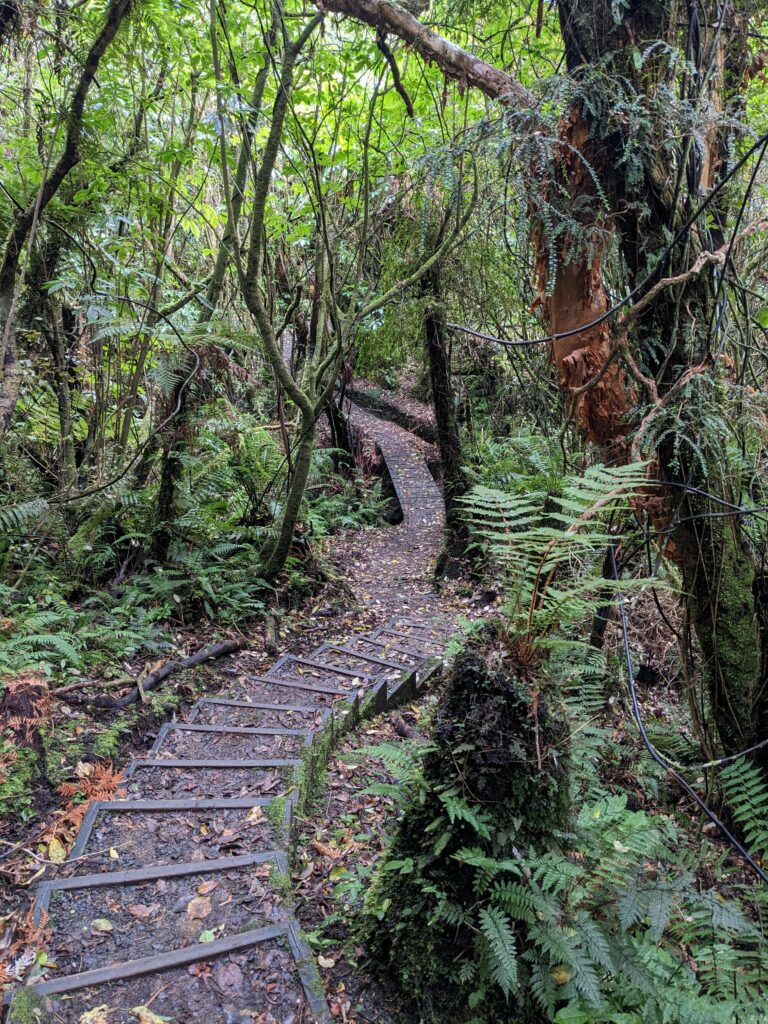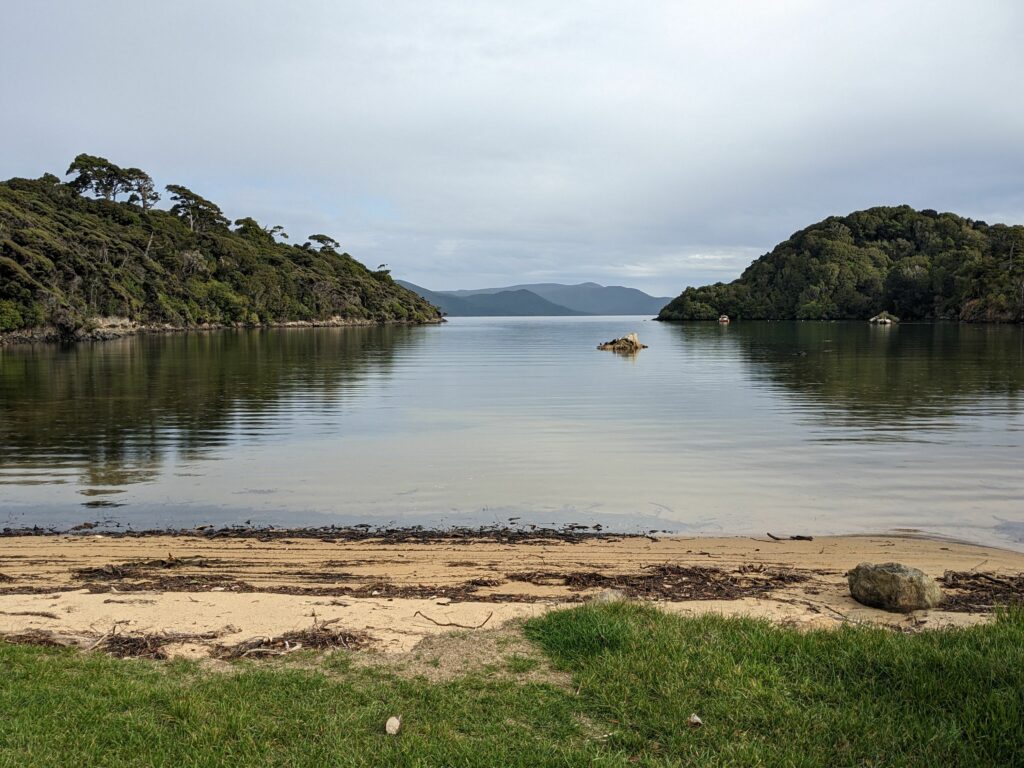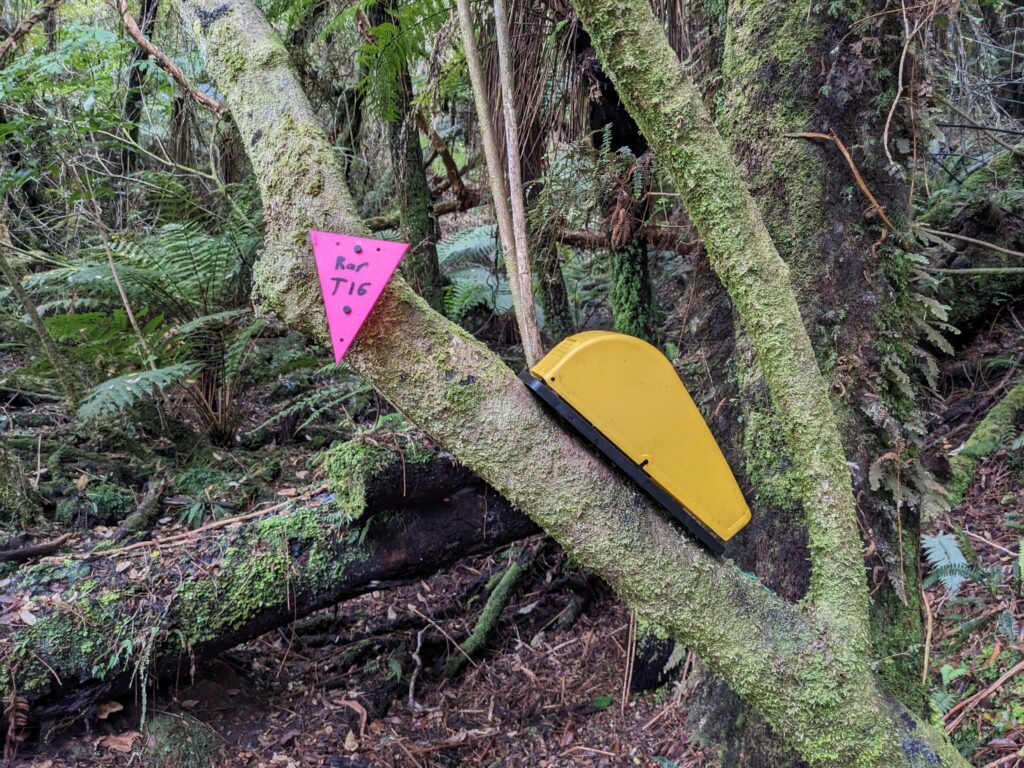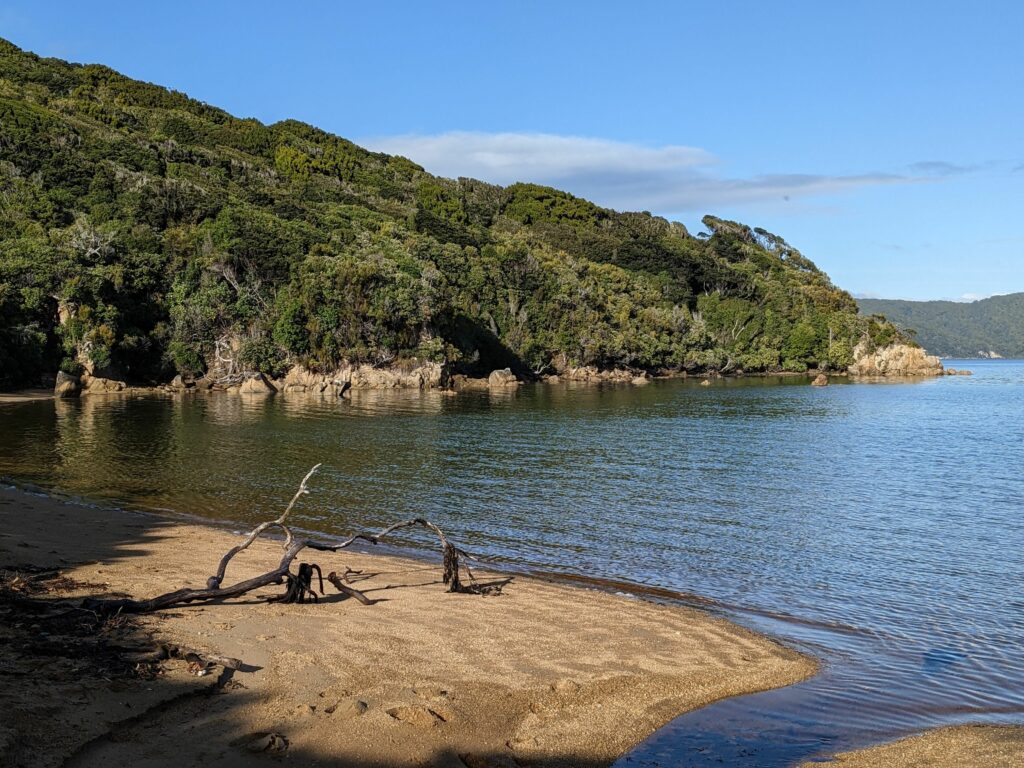From Dunedin, we travelled by bus to NZ’s southernmost city of Invercargill, where we stayed the night before continuing our journey by shuttle and ferry to Stewart Island.
We stayed in the main town of Oban, which has just 300 permanent residents and is pretty much as far south as you can get in NZ while still sleeping in a comfy bed.

That afternoon, we headed out for a walk along the coast. Even though we were still near the biggest (and only) town on Stewart Island, it was immediately apparent just how unspoilt the surroundings are – there was so little development, and in fact 85% of the island is devoted to Rakiura National Park.
This was the reason we were here, as determined efforts to reduce the population of non-native predators have really paid off, giving us the opportunity to meet some wildlife that is all but extinct elsewhere in NZ. We’d already had a taster of just how seriously biosecurity is taken when we had our boots inspected on entering the country, but this was conservation on another level. Visitors were instructed to check carefully for rats and seeds, boats and fishing equipment needed to be scrubbed before moving to a new area and there were rat traps everywhere. Later on, we even saw a predator fence that runs across the island, theoretically splitting the landscape into where there are rats, possums, stoats, and the like, and where there are none. We never did quite work out which side was which…
Although we had mixed feelings about NZ’s vigour towards eradicating wild mammals (I think rats are pretty cool! 🐀), we had to admit we were quite excited to see some kiwi birds. That evening, we headed out to try our luck. Despite being the national symbol of NZ, these flightless, nocturnal birds are notoriously difficult to spot because of their declining numbers, and Stewart Island is one of the few places where we apparently stood a good chance of seeing them in the wild. Being nocturnal, we needed to go out at night armed with a red torch, as this would allow us to see the birds without disturbing them (they don’t see the red light).
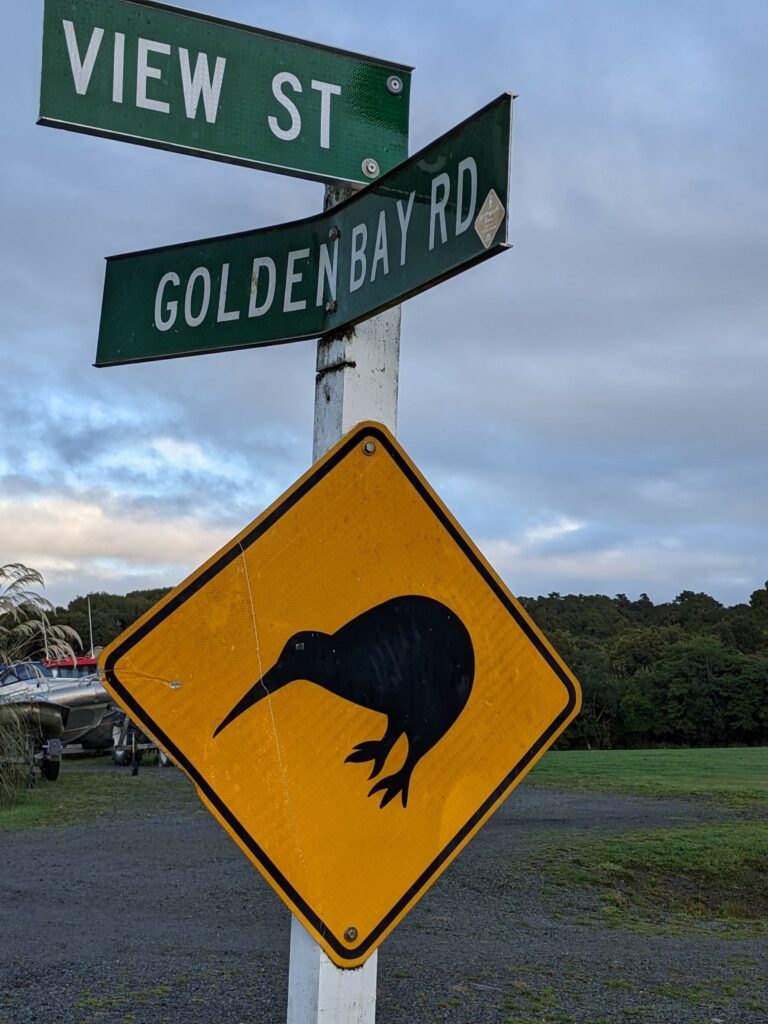
As we headed to meet our guide, Dan, we were astonished to see someone pointing a beam of red light at a kiwi in town! Just as we were grumbling about how we’d just paid an extortionate amount of money for a guide to help us spot them, we realised that it was in fact Dan who had arrived early and knew exactly where to look for a town-dwelling kiwi who had been spotted in recent months. It was a great start, and we watched for a while as he (the kiwi, not Dan) shuffled around in someone’s front garden, using his long beak to dig for worms.

Next, we headed to Mamaku Point to see who else we could spot. It was absolutely pouring with rain, but Dan assured us that this was good for the kiwi as it softens the ground and helps them find food. In fact, he told us that they are often so intent on feeding that they will bump right into people without noticing. They have no natural predators here, and they really act like it! Dan spoke with great affection about them, telling lots of stories about how they are real characters and full of contradictions – fearful yet curious, strong yet clumsy. He was recently telling a group just how sturdy a kiwi’s legs are when the one just next to them tripped and fell flat on its face, apparently without noticing!
We spent the evening tramping up and down a steep hillside in long, soaking grass without having much luck. Just as we were leaving to try another site, a kiwi popped up right next to us, so close that we could hear him snuffling in the earth while feeding. He seemed to come out of nowhere and we only saw him as we turned to leave, but Dan thought he might actually have been following us around – apparently they sometimes do this. Maybe it’s not the usual response (I should probably say something about the amazing success of conservation efforts on Stewart Island), but my takeaway was that they are SO cute, with their comically long beaks, big round bottoms and clumsy demeanour.
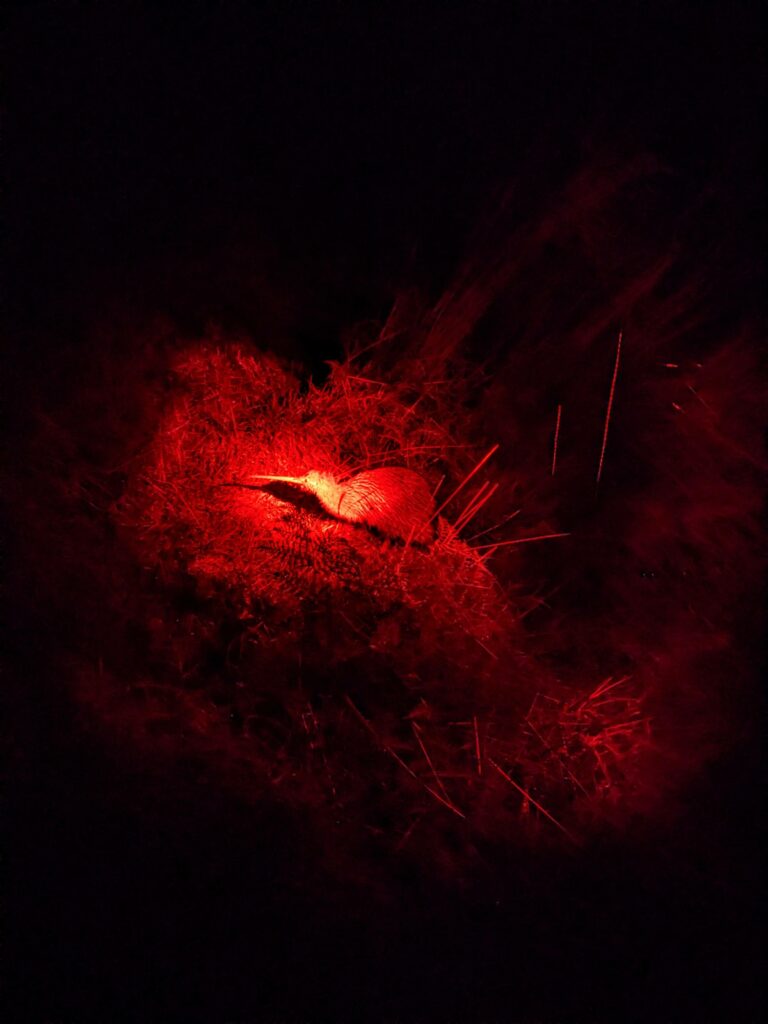
The next day, we headed to another conservation success story: Ulva Island. This is home to a number of rare bird species, some of which are extinct elsewhere. To get there, we hopped on a small ferry, where to our amusement (and bemusement), our boarding passes were made out of leaves. Was this for real?!


Mario headed off on a specialist birdspotting tour, but our budget didn’t quite stretch to this so we opted for the self-guided approach. I don’t think either of us had high hopes that we’d see very much as we’re not exactly ornithologists in our usual lives, but it was a strangely magical experience. Before long, we’d seen rare South Island saddlebacks, red-crowned kākāriki, kākā (possibly…), fantails and, our favourites, lots of charming little South Island robins.
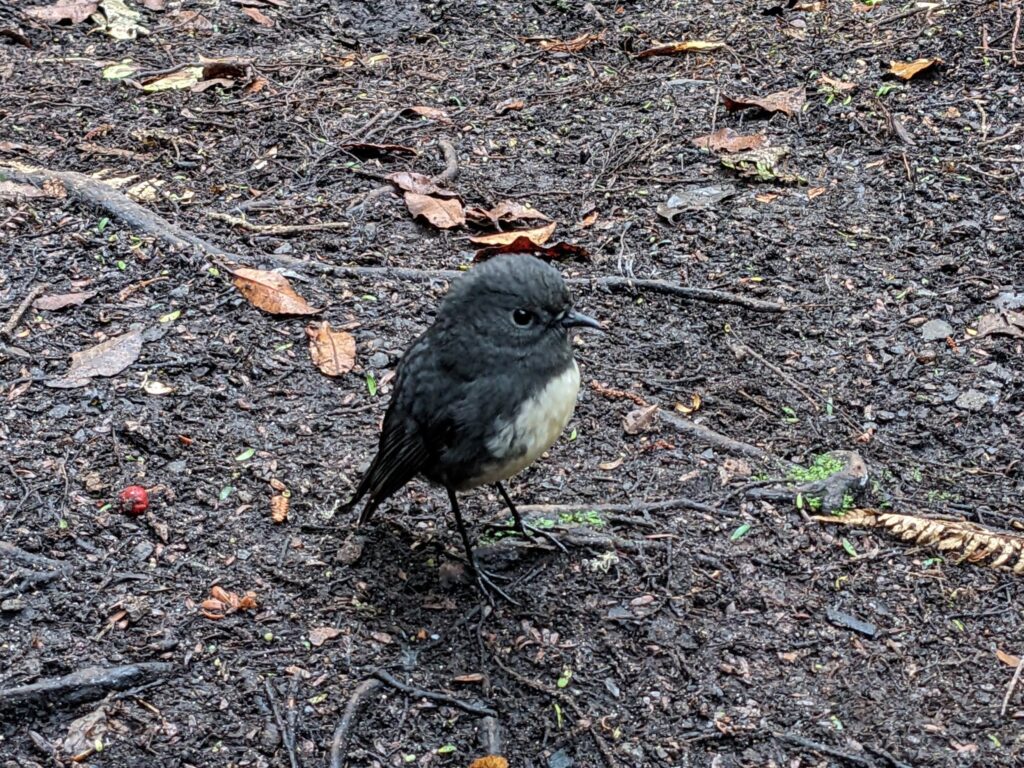
The island itself was beautiful too, with lush untouched forest and deserted beaches.
We actually spent most of our time on Ulva Island dodging the cheeky weka, flightless birds who were very persistent but very entertaining. Despite not being able to fly, they still managed to follow Oli out to a rock off one of the beaches, where he’d taken a flying leap in order to try and eat his lunch in peace. No such luck, the weka wanted to be friends!


To complete our successful day of birdspotting, the skipper on our return ferry pointed out a mollymawk albatross who had come to say hello.
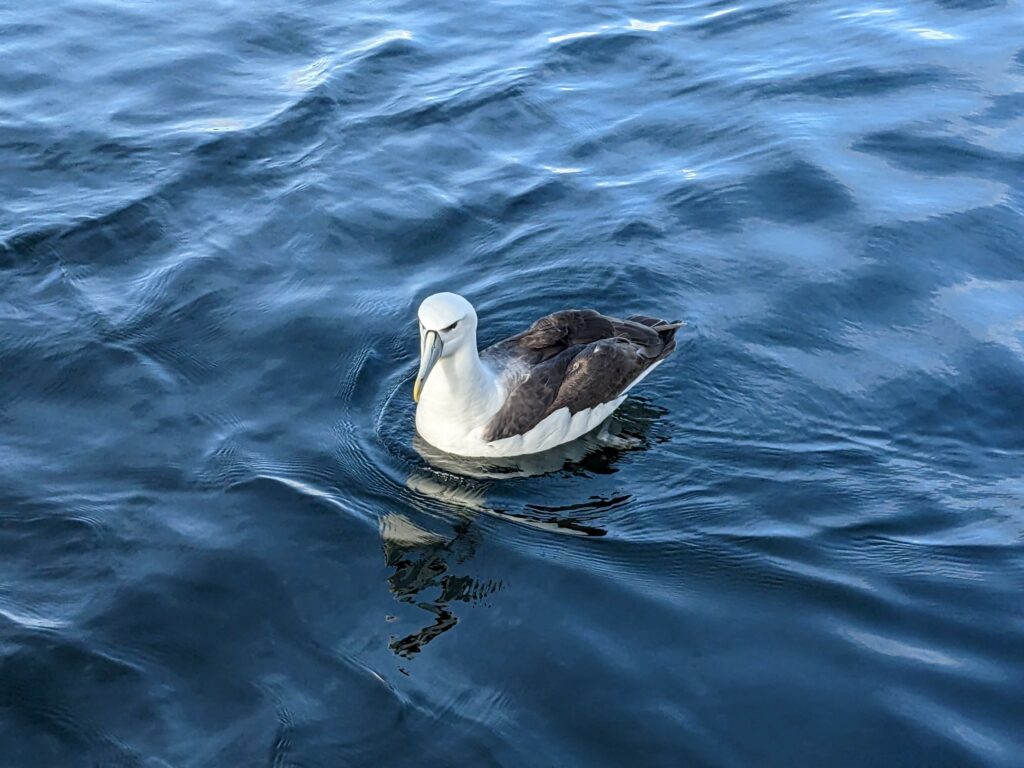
Our time on Stewart Island also marked the end of a brilliant few weeks travelling with Mario, and after a ferry crossing that I’d rather forget (!), we said farewell in Invercargill. Mario was heading back to Auckland to begin a 31-hour journey back to Berlin, and we were headed to Queenstown. Mario – thanks so much for joining us for a month of cycling, hiking, wildlife, wine, trams and Tim Tam Slams. I guess it was alright if you like that kind of thing 😉




